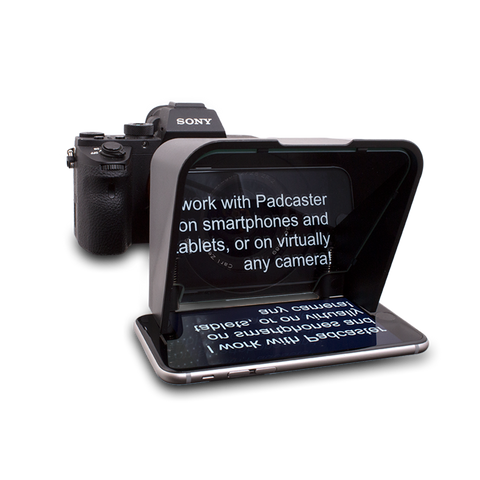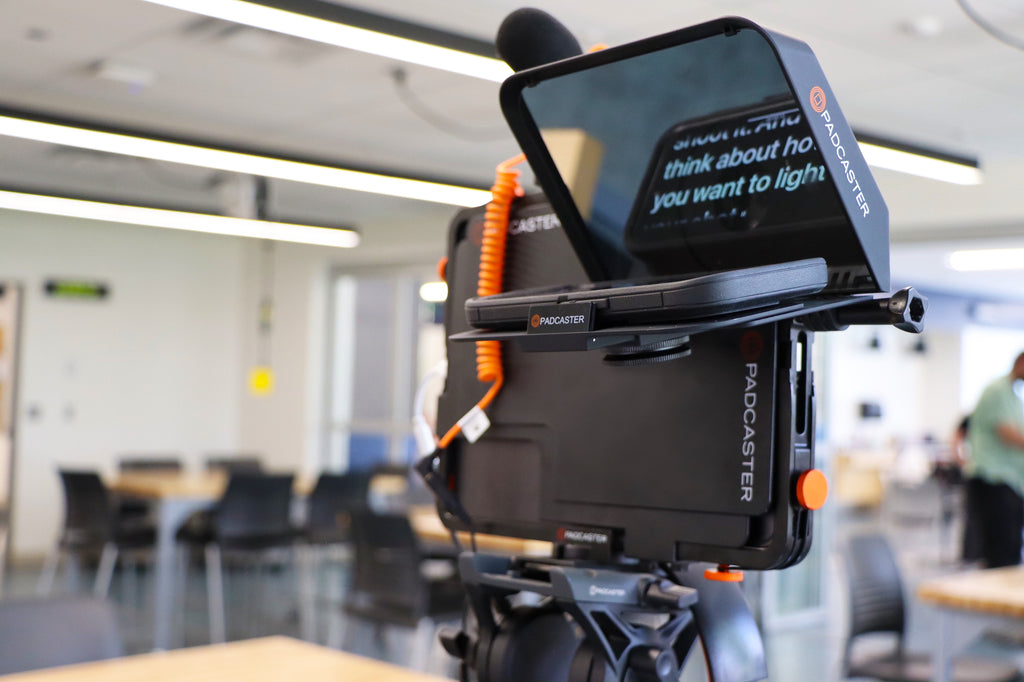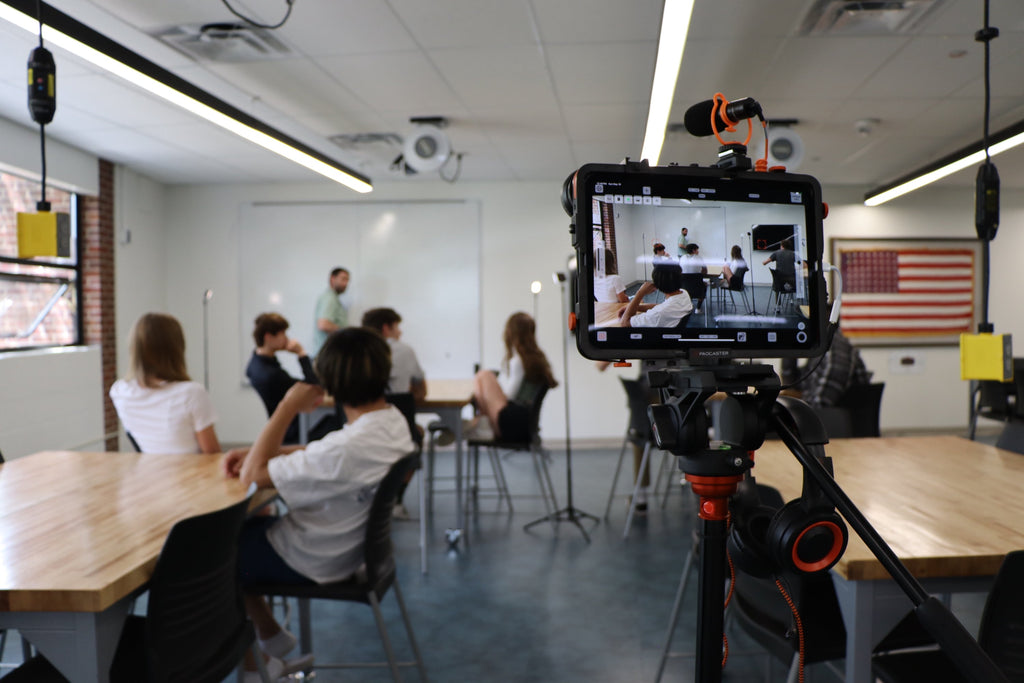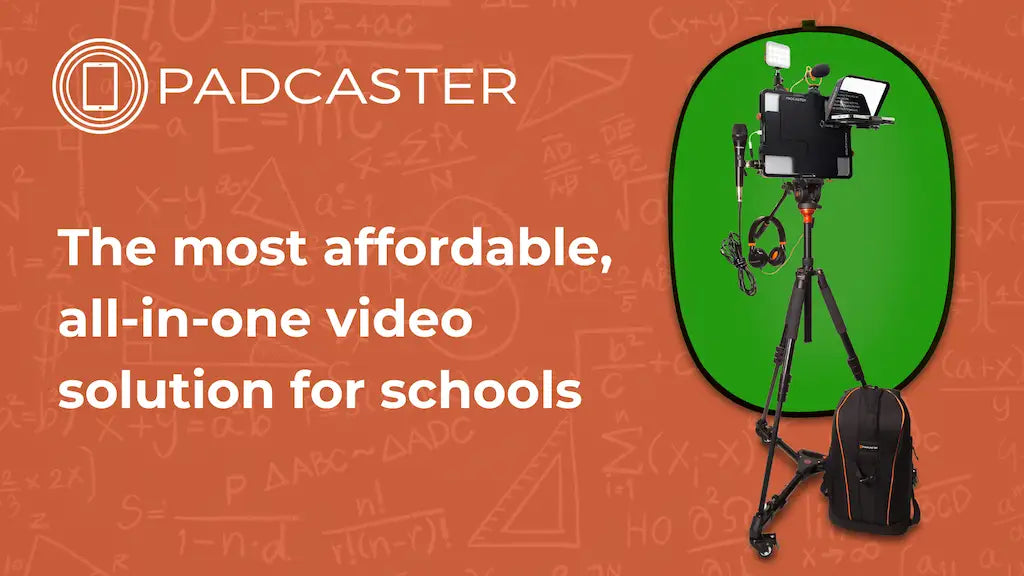
Across platforms like Stitcher, Spotify, Pandora, and Apple and Google Podcasts, the number of monthly podcast consumers stood just over 100 million listeners in 2020, a 16% growth year-over-year, according to Edison Research's The Infinite Dial survey.
If you want to go beyond just audio and increase listener engagement with livestreams, you probably have a few questions like what type of equipment you need to get started. Is it worth your time to livestream your podcasts? In addition to great content, the second most important factor to the quality of podcasting is the equipment. Let's take a look at what you'll need to get started.
Video Podcast Equipment — The Basics
Adding livestreams to your podcasts requires some sort of camera. Does that mean you need to buy a video camera, webcam, or DSLR camera? While it isn't difficult to find a camera that can record 1080p (HD resolution), finding a high-quality camera at a reasonable price can be a challenge. Similar to cameras used for vlogging, a camera base and lens for livestreaming can run you a few hundred to a few thousand dollars each.
>>Insert image of a padcaster product<<
A webcam, while convenient for video conferencing, can lend to awkward angles and lacks flexibility. Instead of spending a small fortune or settling for sub-par video equipment, reach for your smartphone, tablet, or iPad and turn your device into a mobile podcast kit Padcaster technology.
In fact, you can transform any smartphone into a video broadcast studio by adding podcast equipment for iPhone or Android-based phones. To livestream from different angles, you'll need to use more than one camera or device and multi-cam software.
Podcast Microphones
Yes, you can use the mic on your computer, smartphone, or tablet; however, internal microphones fall short of excellent sound. To capture better audio quality, you need an external condenser or dynamic mic. The condenser microphone requires a power source such as a battery or your mobile device. This type of mic excels at capturing detailed sounds in a studio setting. In contrast, a dynamic microphone, which does not require an outside power source, can virtually eliminate more background noise, making it useful for recording voices in-studio and outdoors.

In addition to knowing the general basics between the two types of microphones, understanding microphone polar patterns can help you select the appropriate mic for your needs. These patterns indicate how well a microphone picks up sounds from a direction or angle around the mic.
Types of polar patterns of microphones
- Omnidirectional microphones can pick up sounds 360 degrees around the mic. This microphone type is best when you want your audience to hear sounds from all directions (like a group of singers).
- Unidirectional (cardioid) microphones are best at catching audio from the front while ignoring sounds from its sides and rear. This type of microphone picks up about one-third of the ambient noise as an omnidirectional. The best application for a unidirectional mic is for a vlogger, interviewer, podcaster, or anyone who is speaking directly to the camera.
- Supercardioid and hypercardioid are both variants of a cardioid microphone in that they are more directional than the cardioid. One example of this type of microphone is the shotgun mic, commonly used in film and theater. It is an excellent option for catching sound from overhead.
- Bidirectional, or figure-8, microphones pick up audio in the front and back of the mic. This type of mic works when taking questions from an audience or interviewing guests.
- Multiple pattern microphones host various switchable polar patterns that typically include omnidirectional, cardioid, and bidirectional. Many condenser microphones feature multiple polar patterns that can offer you versatile placement options.
Microphone connectors
Now that we got that out of the way, it's time to move onto connecters. If you are going to stream through your desktop or laptop, you'll need a microphone that has either a USB or XLR connector. When recording yourself in a single location, such as your home studio, a USB will suffice. On the other hand, if you intend to record two or more people, an XLR is a better choice.
Most mics with an XLR connector require an audio interface to connect to a computer via a USB or Thunderbolt port. What does an audio interface do? It digitizes the audio signal from your microphone into something your computer can read and store. For quick real-time changes to sounds, like the volume of a guest's voice, a mixer is invaluable. It is important to note that the number of inputs on either of these devices determines how many microphones you can use. Other studio microphone accessories you may need include a pop filter for microphones and a mic stand or mount.

When you're livestreaming on the go, a lavalier or lapel style (omnidirectional) mic that clips onto your clothes is handy because it allows you to move around. A lavalier is also useful for in-studio work. If you have multiple podcast participants, a shotgun mic may prove a better selection, as they can reduce the amount of background noise picked up when you're streaming from a distance or outdoors. Using one mic as a backup or the two microphones simultaneously can help ensure the best sound quality.
As with any podcasting, whether recorded or live, we recommend wearing a set of over-the-ear headphones to monitor audio and minimize any extraneous sounds or poor mic technique (having the mic too close or too far away).
Must-Have Accessories for Podcasters
Besides audio and video podcast equipment, a handful of accessories can help you create great videos. To prevent shaky footage, you'll want a tripod for your camera. Adjustable lighting is also necessary to avoid glare, shadows, and halos around you and your guests. Other useful accessories include a teleprompter and green screen, which is an excellent tool for hiding and customizing your set's background indoors or out.
If you plan on using an iPad instead of a standard camera to livestream your podcasts, there's no need to scour stores and the internet for a collection of tools and accessories. With the Padcaster Studio, you can turn your iPad into a full-production suite for less than you can buy many individual components. It’s one of the best podcasting equipment packages you’ll find for under $1,800.
Teleprompter for Podcasting
One accessory included in the Padcaster Studio is the portable Padcaster Parrot teleprompter. This device turns a smartphone into a professional teleprompter so you can include scripted content along with your spontaneous conversations. The Parrot teleprompter works with iOS and Android mobile devices and comes with a remote to control everything wirelessly.

Is it worth your time to livestream your podcasts? It's true, livestreaming your podcast requires extra work; however, only you can answer if it's worth the effort. With the tools above and your creativity, you are well on your way to crafting content that will engage listeners and viewers alike.
Padcaster transforms your iPad or smartphone into an all-in-one mobile production studio so you can create professional-quality videos from or anywhere. Whether it’s for telecommuting, remote broadcasting or livestreaming -- Padcaster will help you produce high-quality content wherever you are. Fill out the form below to get in touch with one of our sales consultants!
Need More Information?
Fill out the form here to get in touch with a member of the Padcaster Team.


